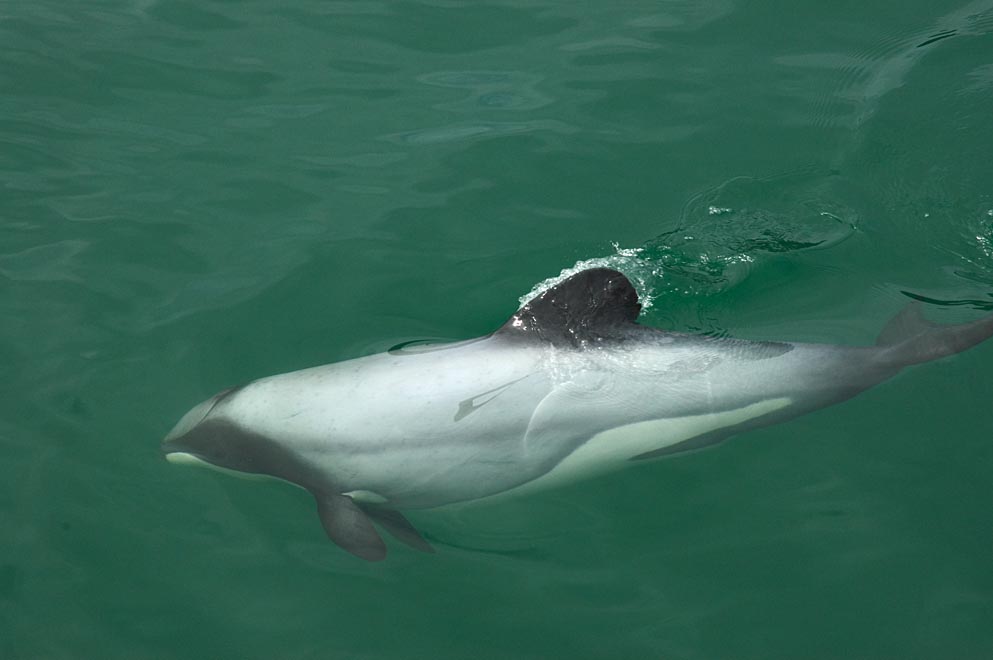The Government has announced a suite of measures in an effort to protect New Zealand’s native Māui and Hector’s dolphins.
The measures include a nationwide ban on drift netting, a prohibition on granting new permits for seismic surveying and seabed mining in expanded marine mammal protection areas, and the rollout of a toxoplasmosis action plan. There were more than 15,000 submissions on the proposal, which was released for consultation last year.
The SMC asked experts to comment on these changes.
Associate Professor Karen Stockin, Massey University, Auckland, comments:
“I am pleased to see that protection of the endemic Māui and Hector’s dolphin will take a wider ONE HEALTH perspective via the Toxoplasmosis Action Plan. By looking at associated diseases linked to Toxoplasmosis and notably, how these are affected by wider environmental contaminants and water quality more generally, we can now begin to address broader health concerns affecting not only the Māui and Hector’s dolphin, but also other marine species too.”
Conflict of interest statement: “PI on preliminary toxicology assessment on NZ marine mammals (including Māui and Hector’s dolphins) and contributing scientist to Māui’s Research Advisory Group”
Professor Elisabeth Slooten, Department of Zoology, University of Otago, comments:
“What’s needed is consistent protection for these dolphins, throughout their range, from gillnet and trawl fisheries.
“For Māui dolphins in the North Island, that means all the way around to East Cape. Hector’s dolphins need protection all around the South Island, except for Fiordland.
“One consistent distance from shore – or better still, water depth – is needed as an offshore boundary for these protection measures to be effective.
“The IWC has recommended 20 nautical miles offshore. The IUCN recommends all waters less than 100 metres deep. That’s the only way to protect the smallest, most vulnerable dolphin populations around both the North and South Islands.
“With the proposed protection measures, what’s likely to happen is that we will lose the dolphins on the east coast of the North Island, and from areas like Otago and the Catlins.
“The proposed protection measures are a complex jigsaw puzzle with different regulations for gillnetting and trawling, different distances offshore, ranging from no protection to 4, 7, or 12 nautical miles offshore in different areas. The regulations around Banks Peninsula are so complex, you need a map to describe them. The regulations for most of the South Island have not yet been outlined, and will be based on more consultation.
“It’s a big surprise that Government is again asking for submissions, by 21 July. It’s not clear when a decision would follow.
“This would have been the perfect time to consult on the IWC and IUCN options, which were not included in the consultation last year. It doesn’t make sense to consult a second time, on protection measures that look something like option 3 in the draft Threat Management Plan.”
No conflict of interest.
 Associate Professor Rochelle Constantine, University of Auckland, comments:
Associate Professor Rochelle Constantine, University of Auckland, comments:
“This is a bold move by the government to protect our endemic Māui and Hector’s dolphins. I am pleased to see areas protected where small, distinct populations of dolphins exist.
“Toxoplasmosis is of major concern and our knowledge about this is severely lacking, but with New Zealanders’ commitment to Predator Free 2050, this provides more incentive to understand the impact of cats on our native wildlife.
Conflict of interest statement: “I am the Co-PI on research on Maui and Hector’s dolphins funded by DOC and MPI. I was on the Science Advisory Panel for the Threat Management Plan.”
